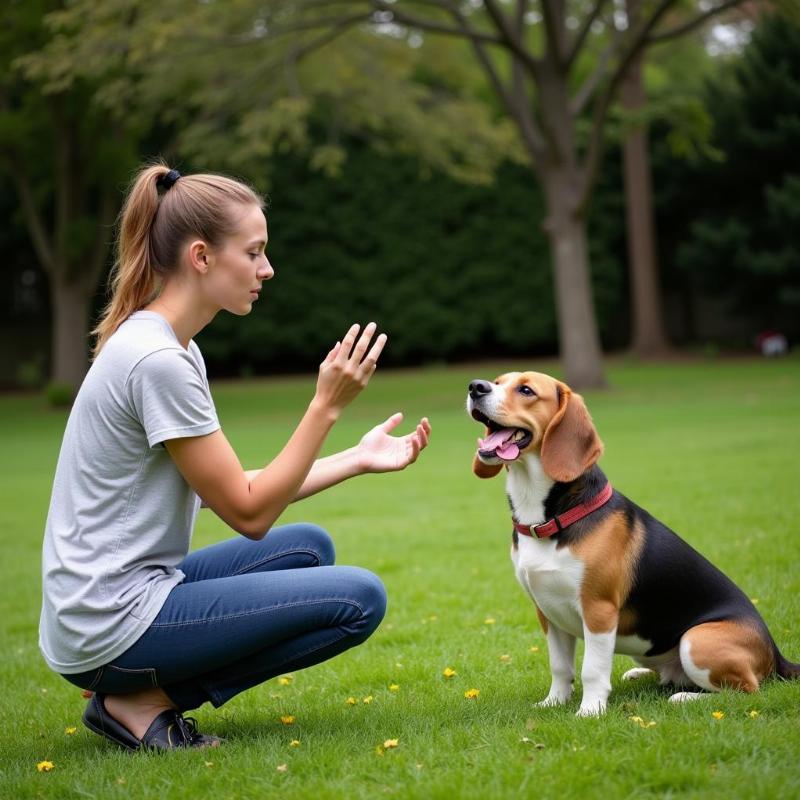Keeping your furry friend safely contained within your yard without a traditional fence can seem like a daunting task. However, with a little creativity and the right tools, you can create a secure and happy environment for your dog without restricting their outdoor fun. This article will explore various effective strategies and solutions to help you achieve this, from invisible fences and training techniques to landscaping ideas and innovative containment systems. We’ll cover everything you need to know to keep your dog safe and sound in your yard, fence-free!
Invisible Fences: A Popular Fence-Free Solution
Invisible fences, also known as underground or wireless fences, offer a discreet and effective way to contain your dog. These systems typically consist of a transmitter, a buried wire (for in-ground systems) or a central base unit (for wireless systems), and a receiver collar worn by your dog. The transmitter emits a radio signal that creates a boundary. When your dog approaches the boundary, the receiver collar emits a warning tone. If they continue to cross the boundary, they receive a mild static correction.
While invisible fences can be effective, proper training is crucial. It’s important to introduce your dog to the system gradually and reinforce the boundary with positive reinforcement.
Training Techniques for a Fence-Free Yard
Training plays a vital role in keeping your dog in the yard without a physical fence. Consistent and positive reinforcement methods are key to success. Teaching your dog basic commands like “stay,” “come,” and “leave it” can help establish clear boundaries. Reward-based training with treats and praise motivates your dog to follow your commands.
Remember, patience and consistency are crucial for successful training. Start with short training sessions and gradually increase the duration as your dog progresses.
 Dog Training Stay Command
Dog Training Stay Command
Landscaping and Natural Barriers
Clever landscaping can create natural barriers that deter your dog from leaving the yard. Planting dense shrubs and bushes along the perimeter can form a visual and physical barrier. Certain plants, like rosemary and lavender, have strong scents that dogs tend to avoid. You can also use raised garden beds or strategically placed rocks to define the boundaries of your yard.
While landscaping can be helpful, it’s important to note that it may not be as effective as other containment methods for highly motivated escape artists.
Other Containment Systems and Strategies
Several other innovative containment systems and strategies can help you keep your dog in the yard without a fence. Tie-out cables offer a flexible and affordable solution for supervised outdoor time. Trolley systems provide more freedom of movement than tie-outs, allowing your dog to roam within a defined area. GPS dog trackers can help you monitor your dog’s location and alert you if they leave your property.
Choosing the right containment system depends on your dog’s breed, temperament, and your individual needs.
Conclusion
Keeping your dog safe and contained in your yard without a fence is achievable with the right approach. Whether you opt for an invisible fence, dedicate time to training, utilize landscaping techniques, or explore other containment systems, remember to prioritize your dog’s safety and well-being. By implementing the strategies outlined in this article, you can create a secure and enjoyable outdoor environment for your furry friend without the need for a traditional fence.
FAQ
- Are invisible fences safe for dogs? Yes, when used correctly and with proper training, invisible fences are generally safe for dogs.
- How much does an invisible fence cost? The cost of an invisible fence varies depending on the size of your yard and the features of the system. Expect to pay anywhere from $100 to $500.
- What are the best training techniques for a fence-free yard? Positive reinforcement methods, such as reward-based training with treats and praise, are most effective.
- What types of plants can I use to create natural barriers? Dense shrubs, bushes, and fragrant plants like rosemary and lavender can deter dogs from leaving the yard.
- What should I do if my dog keeps escaping my yard? Consult with a professional dog trainer or veterinarian for personalized advice.
Related Articles
About Beautdogs.us
Beautdogs.us is your premier resource for all things dog-related in the US. We offer expert advice on dog breeds, care, training, and product reviews. Whether you’re a seasoned dog owner or just starting your journey with a furry friend, Beautdogs.us provides reliable information to help you navigate the joys and challenges of dog ownership. Connect with us for personalized support at [email protected] or call us at +1 501-555-7529.